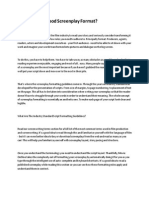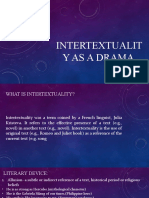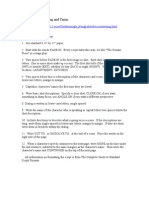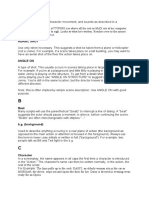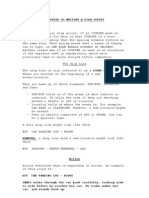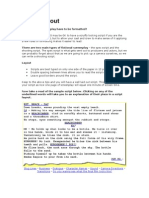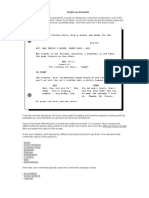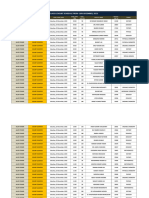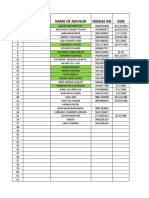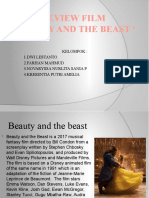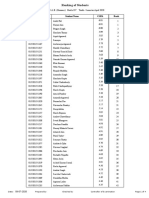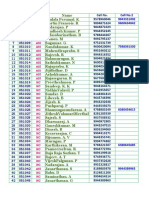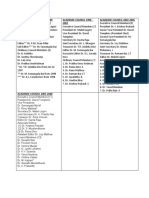SCENE HEADING
The first screenplay Element type is a Scene Heading, also known as a Slugline. Scene Headings mark any change in location or
time in your screenplay. Every scene begins with one.
A short description of the location and time of day of a scene, also known as a "slugline." For example: EXT. MOUNTAIN CABIN -
DAY would denote that the action takes place outside a mountain cabin during daylight hours.
EXT. WAREHOUSE DISTRICT - DAY
“EXT” stands for “Exterior.” To create a Scene Heading in Slug line, just begin a new line with one of the common Scene Heading
prefixes:
INT.
EXT.
INT./EXT.
“INT/EXT” is often used for scenes in vehicles.
ACTION
Action is the catchall element of screenwriting. It’s where you tell the reader what happens on the screen.
The moving pictures we see on screen. Also, the direction given by a director indicating that filming begins.
CHARACTER
Character elements are in UPPERCASE and are followed immediately by Dialogue. When any character speaks, his or her name
appears on the line preceding the dialogue. In screenplays, the name is tabbed to a location that is roughly in the center of the
line. In playwriting, typically the name is centered, but with the advent of screenwriting software that automatically positions the
character name correctly, it has become acceptable to use a similar format for character names in stageplays.
DARTH VADER
Luke. Search your feelings.
�DIALOGUE
Dialogue comes right after Character. The speeches between characters in a film or a play.
NAK
What's up, dead man?
PARENTHETICAL
Parenthetical elements are wrapped in parentheses, and follow a Character or Dialogue element.
Also known as a "wryly" because of the propensity of amateur screenwriters to try to accent a character's speech -- as in BOB
(wryly) -- an inflection to a speech noted by a writer. Of course, in stageplays, all stage directions (at least in Manuscript Format)
are in parentheses, but "directing off the page," as it's often called, is equally frowned upon.
HUDSON
(Cupping his mike)
He's coming in. I feel safer already.
TRANSITION
Transitions are used to indicate special information about how one scene transitions to another. They are not as common as they
once were, but they are still useful.
A script notation denoting an editing transition within the telling of a story. For example, DISSOLVE TO: means the action seems to
blur and refocus into another scene, and is generally used to denote a passage of time.
CUT TO:
Transitions are in UPPERCASE and end in TO:. If you want a Transition that doesn’t end in TO:, begin the line with a greater-than
symbol.
> FADE TO BLACK.
EXTENSION
A technical note placed directly to the right of the Character name that denotes HOW the character's voice is heard. For example,
O.S. is an extension that stands for Off-Screen.
SHOT
What the camera sees. For example, TRACKING SHOT would mean that the camera is following a character or character as he
walks in a scene. WIDE SHOT would mean that we see every character that appears in the scene, all at once.
EMPHASIS
If you’ve been using email for a while, chances are you’ve seen someone wrap a word with asterisks for *emphasis.* Slugline uses
this convention as well.
To italicize, wrap the text in *asterisks.*
To create bold text, wrap in **double asterisks.**
To underline something, wrap it in _underscores_.




